The Beetle House
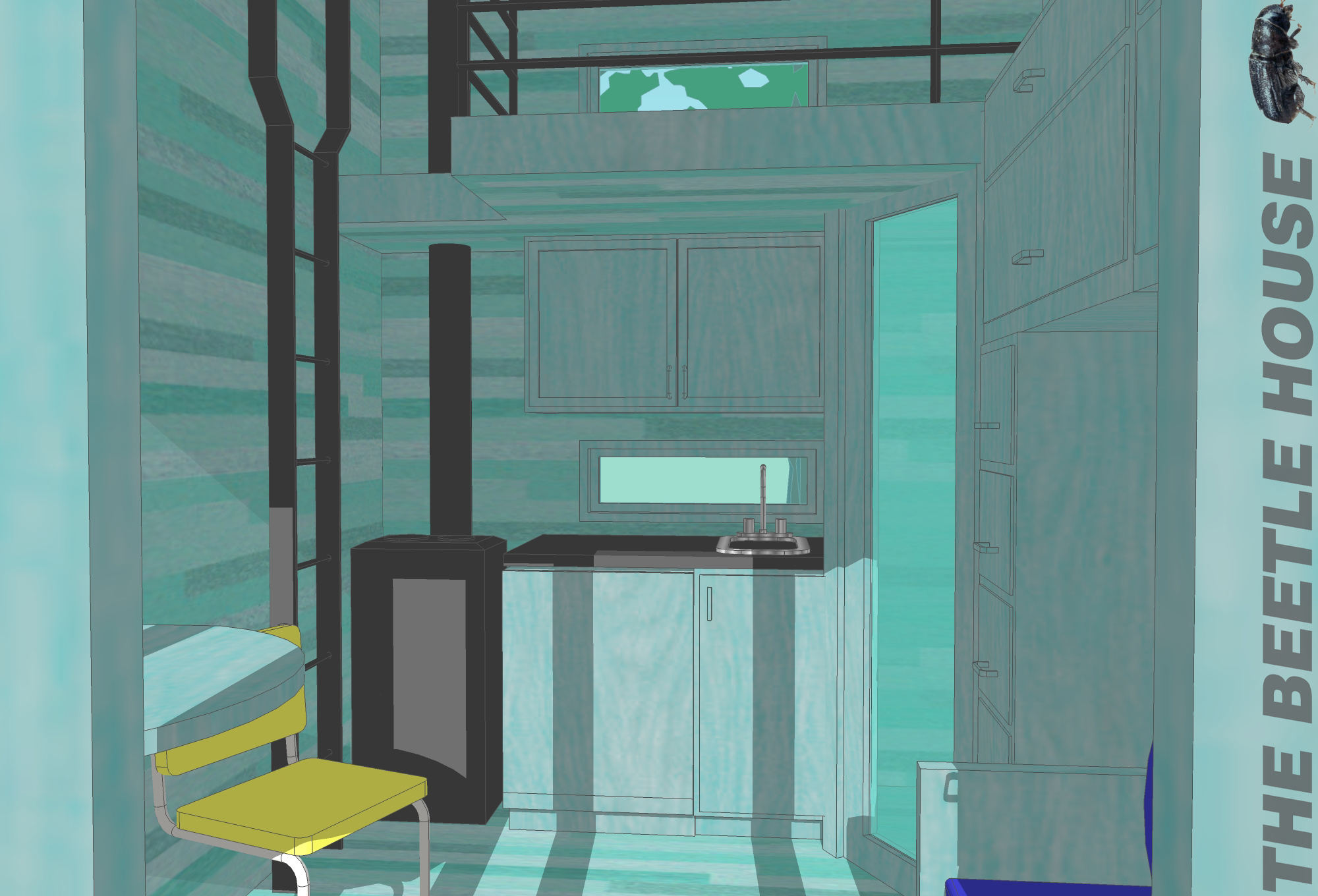
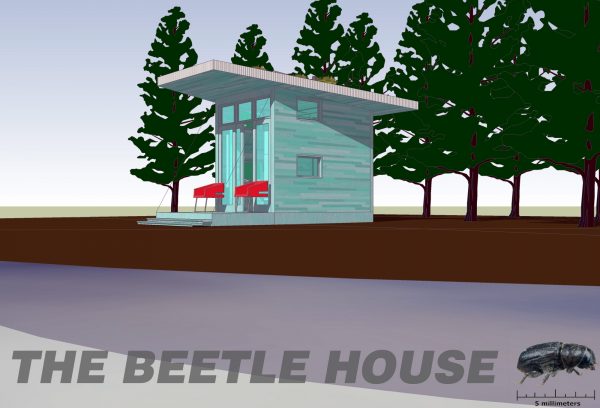
It’s always nice to hear a story of someone turning sour lemons in lemonade. In this case it’s a tiny house design concept called The Beetle House. In October of 2010 a team at Thompson Rivers University in Kamloops, BC entered The Beetle House into the 10 Square Design Competition where it came in number two of 39 entries.
The beetle implied by the project’s name is the mountain pine beetle, which has already eaten its way through 16.3 million hectares of forest in British Columbia. It’s a tiny cylindrical-shaped beetle, about the size of a grain of rice; but once a tree is infested these little buggers can kill it in less than 30 days.
So this university team, (Dale Parkes, Geoffrey Bowe, Ron McGivern, Ashok Mathur, Murray Young, and Michael Mehta), came up with a tiny house design that uses beetle-killed pine as its primary building material and heating fuel.
The complete story of The Beetle House is available at The Flying Shingle. Michael passed the plans and illustrations onto me too, see below. Thanks again Michael!
Dr. Michael Mehta is an Environmental Sociologist who specializes in health and environmental risk issues. He is the Dean of the Faculty of Arts at Thompson Rivers University in Kamloops, BC. With his wife Kathy, Michael spends time at his house on Gabriola Island whenever possible. His blog can be found at arts.blog.mytru.ca.

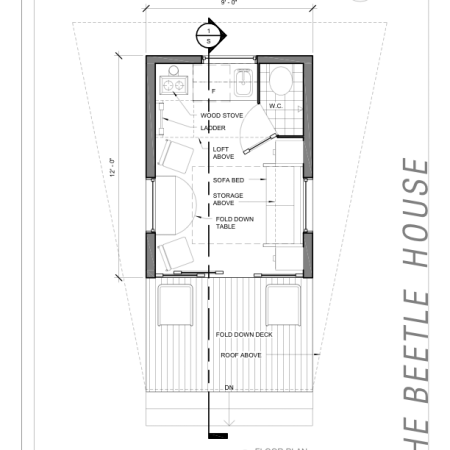
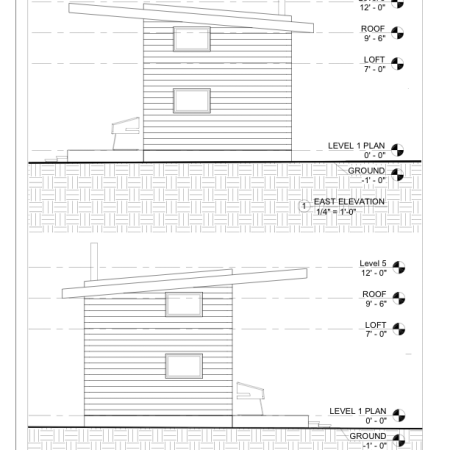
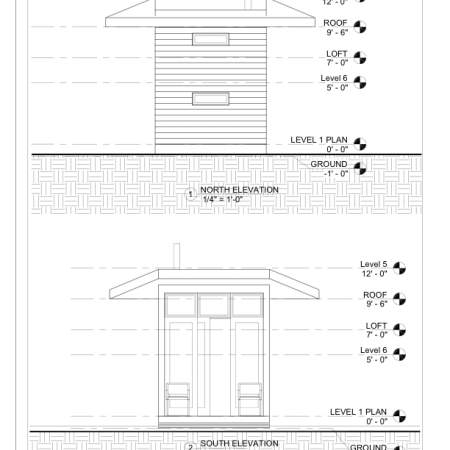
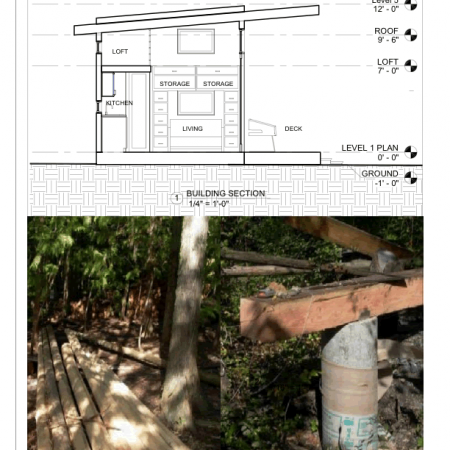
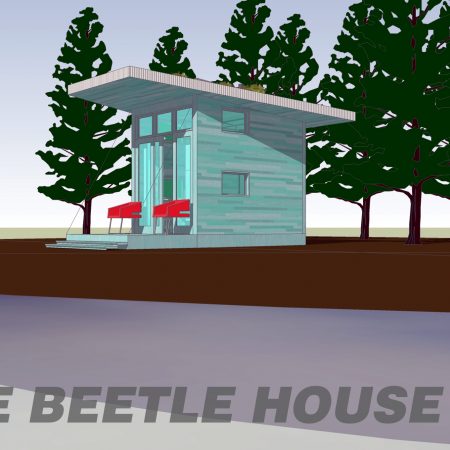
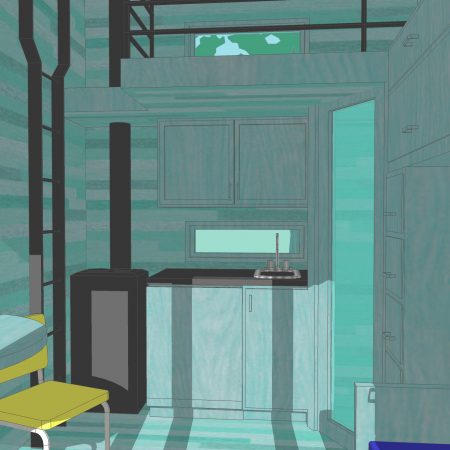
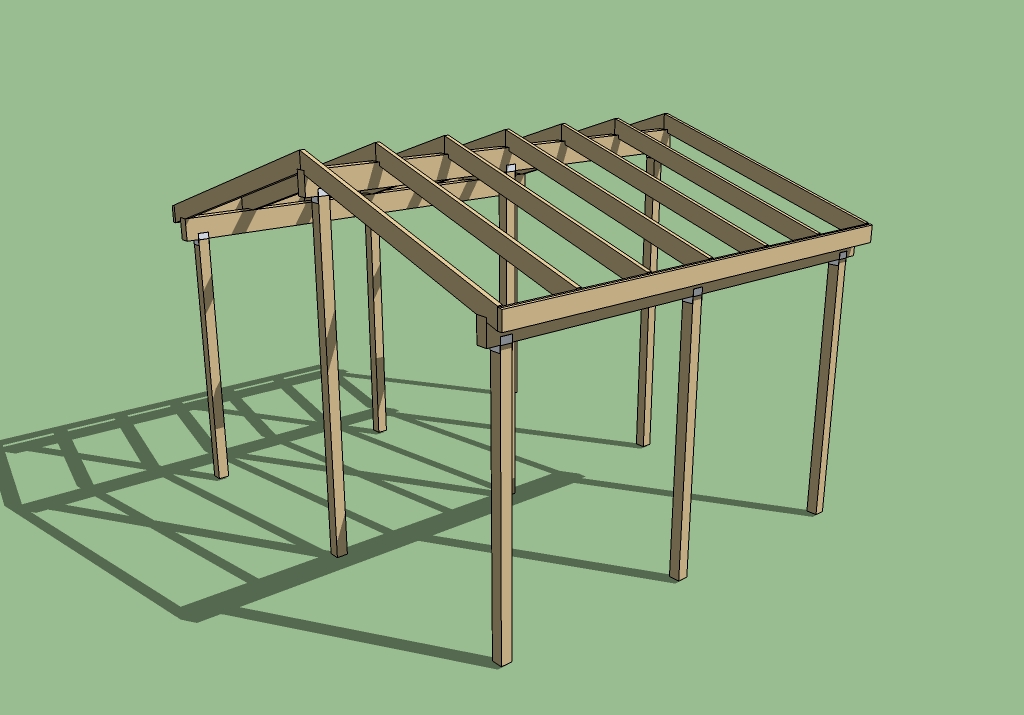
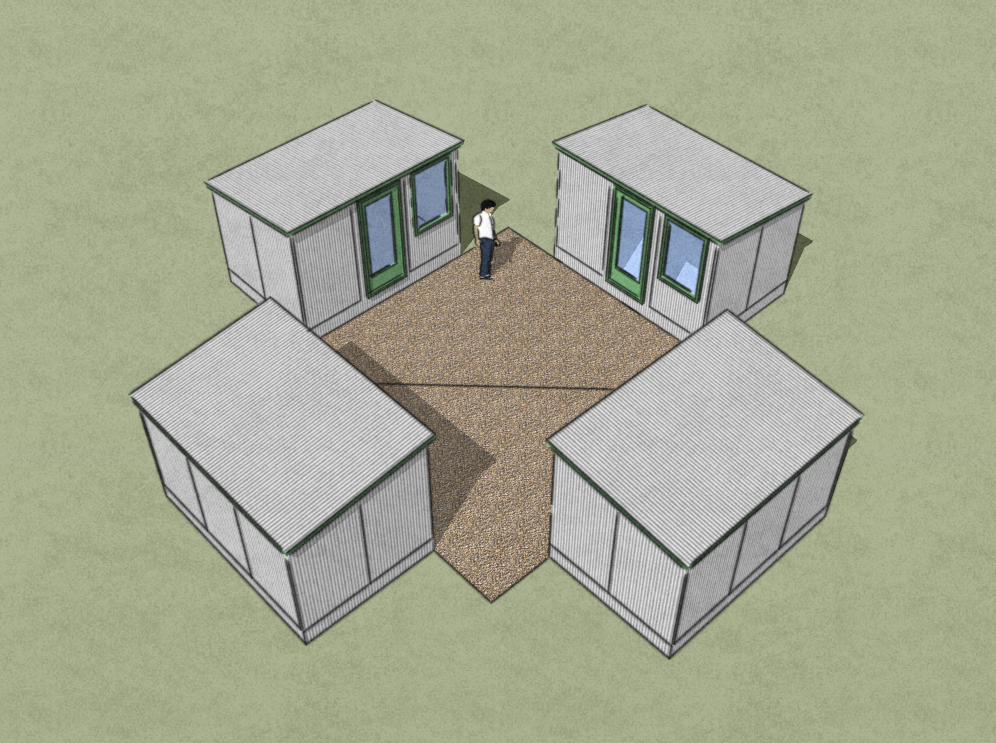



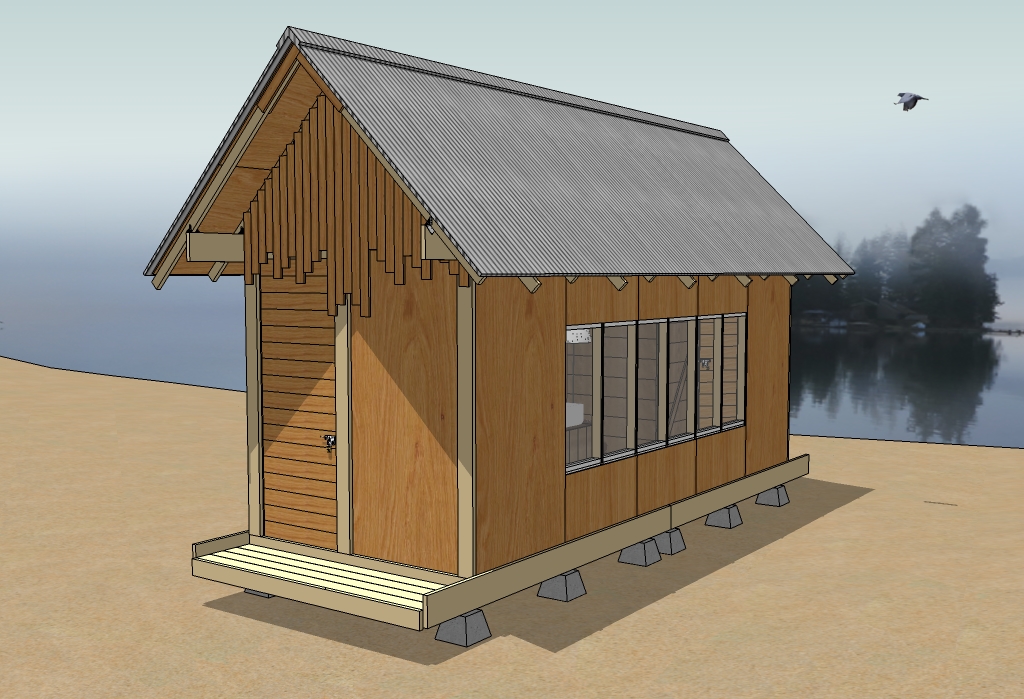
I like this design but in the often soggy area where I live those high roof overhangs don’t usually provide enough shelter from the rain if there’s even a hint of a breeze coming from sides or front. In a larger house the overhang area might be big enough to provide a dry spot but not so much in a tiny house. You can counterract that with a rollup awning or some other method, but just as it is that overhang won’t be very effective. The beetle killed wood is often marketed as Denim Pine and has been tested for strength and durability. http://denimpine.com/documents/47.html
One wonders if the architect has ever used a wood stove because the ONLY ladder to and from the sleeping platform is just a few inches in front of it. Last I heard, wood stoves get hot.
The previous comment is bang-on: the overhang looks cool, but is useless in terms of providing shad or rain cover. With all of that glass in front of such a small space, one could bake muffins inside during the summer.